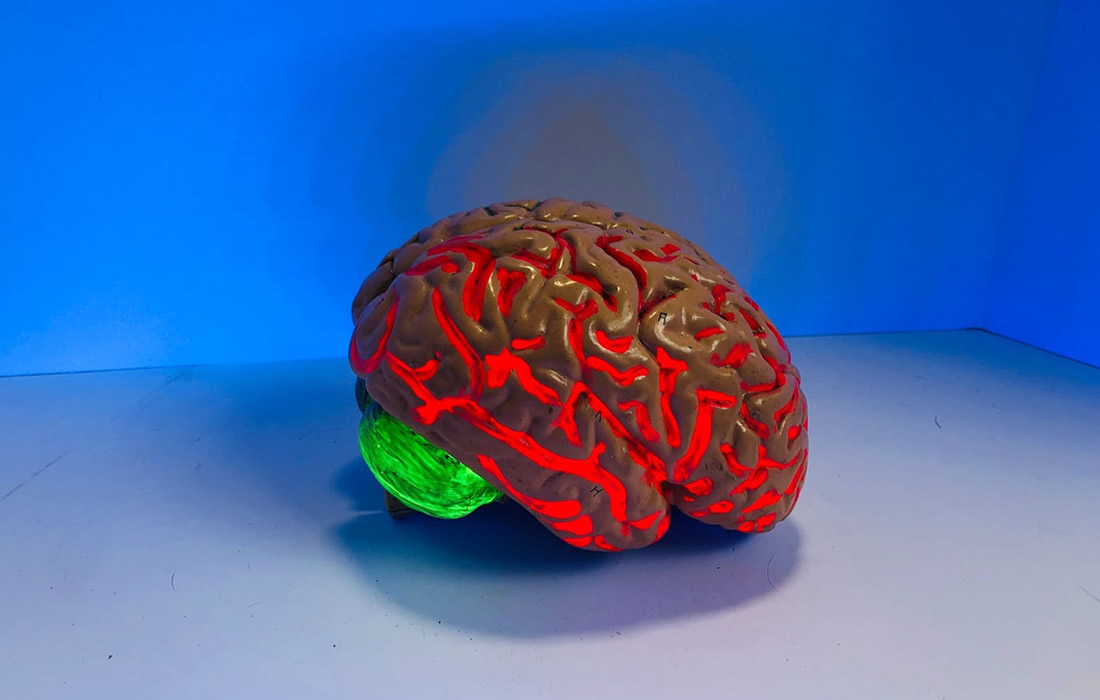Regenerative Medicine News and General Information
New Light on the Link Between Concussion and Alzheimer’s Disease
How much time elapses between a blow to the head and the start of damage associated with Alzheimer’s disease?
A device that makes it possible to track the effects of concussive force on a functioning cluster of brain cells suggests the answer is in hours. The “traumatic brain injury (TBI) on a chip” being developed at Purdue University opens a window into a cause and effect that announces itself with the passage of decades but is exceedingly difficult to trace back to its origins.
In a study recently published, a research team led by Shi subjected functioning clusters of cultured neurons from embryonic mice to three blows of 200 g-force, each approximating the higher end of what a football player receives in a single hit. The trauma leads to an immediate surge in production of acrolein — a molecule associated with oxidative stress and neurodegenerative disease — and a rise in misfolded clumps of the protein amyloid beta 42 (AB42), which is found in masses called plaques in the brains of people with Alzheimer’s disease.
“Now that we know what’s happening, is there something we can do about it? And the answer is yes,” said Shi. “Acrolein is time-dependent; the longer it’s there, the more AB42 aggregation it will cause. Here we show that if we lower acrolein with this drug, we can lower inflammation and AB42 aggregation.”
The device, custom-fabricated at the Purdue Center for Paralysis Research, uses a pendulum to deliver a specific g-force to a small chamber housing a cluster of a quarter million neurons supported by a bed of nutrients.
“Thanks to this device, people should know that when you get a concussion, you don’t have 10 years before you will see damage,” Shi said.
Within the first 24 hours after a hit, results show elevated levels of acrolein in the neuron clusters and a 350% increase in production of misfolded AB42. Shi said acrolein deforms normal AB42 by binding to sections of the protein that contribute to structural stability. Indeed, when the team conducted a simple experiment by combining large amounts of acrolein with normal purified AB42 suspended in fluid, they found elevated levels of misfolded AB42. The properly folded protein is sufficiently fragile that even subjecting normal purified AB42 in fluid (without acrolein) to an impact was enough to provoke misfolding.
“This amyloid beta pathology started within hours, maybe immediately. That’s never been heard of,” Shi said. “It’s like attacking the weight-bearing stud in a house wall. If you break that stud, of course the house is going to fall down.”
Moving forward, Shi said, he may be able to incorporate multiple additional features, which would allow the measurements of minute forces that cells experience during the blow, and biochemical testing — like checking levels of acrolein — without removing cells from the chamber.
Sources:
Edmond A. Rogers, Timothy Beauclair, Jhon Martinez, Shatha J. Mufti, David Kim, Siyuan Sun, Rachel L. Stingel, Alexandra M. Dieterly, Nikita Krishnan, Jennifer Crodian, Riyi Shi. The contribution of initial concussive forces and resulting acrolein surge to β-amyloid accumulation and functional alterations in neuronal networks using a TBI-on-a-chip model. Lab on a Chip, 2023; 23 (15): 3388 DOI: 10.1039/D3LC00248A
Purdue University. “A ‘mini-brain’ traces the link between concussion and Alzheimer’s disease.” ScienceDaily. ScienceDaily, 29 August 2023. <www.sciencedaily.com/releases/2023/08/230829125919.htm>.
Images from:
Photo by Natasha Cornell
https://unsplash.com/photos/byp5TTxUbL0

